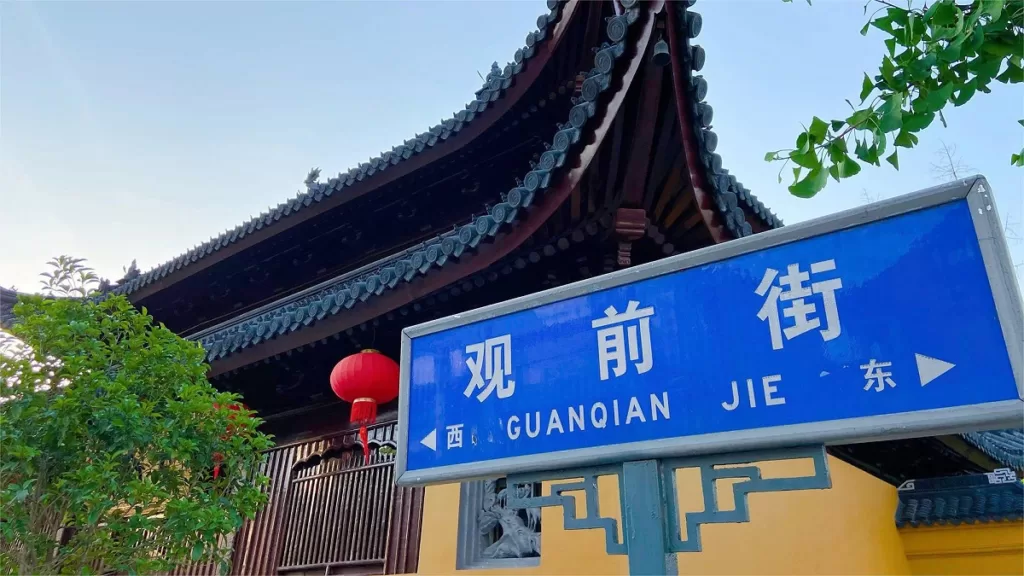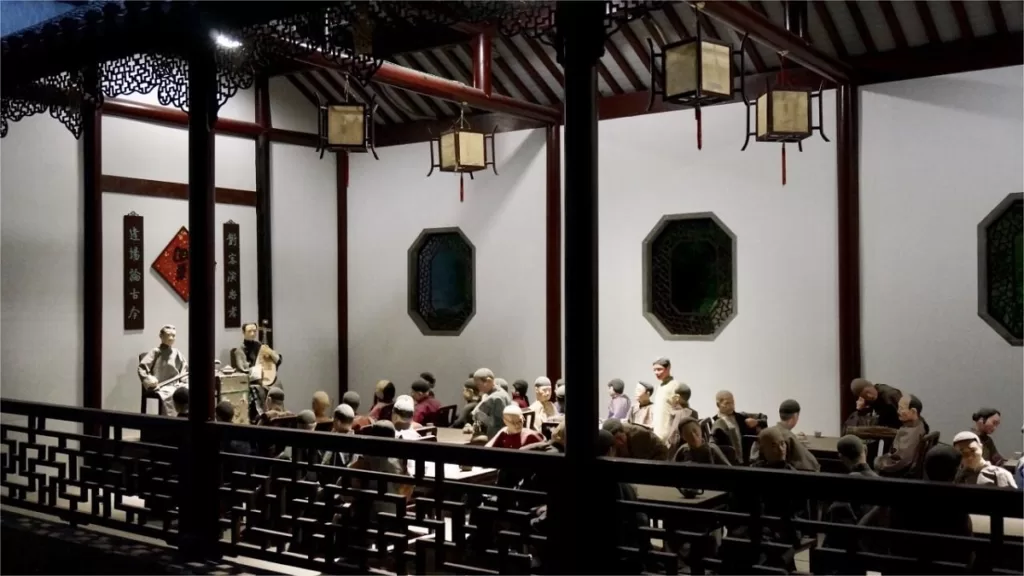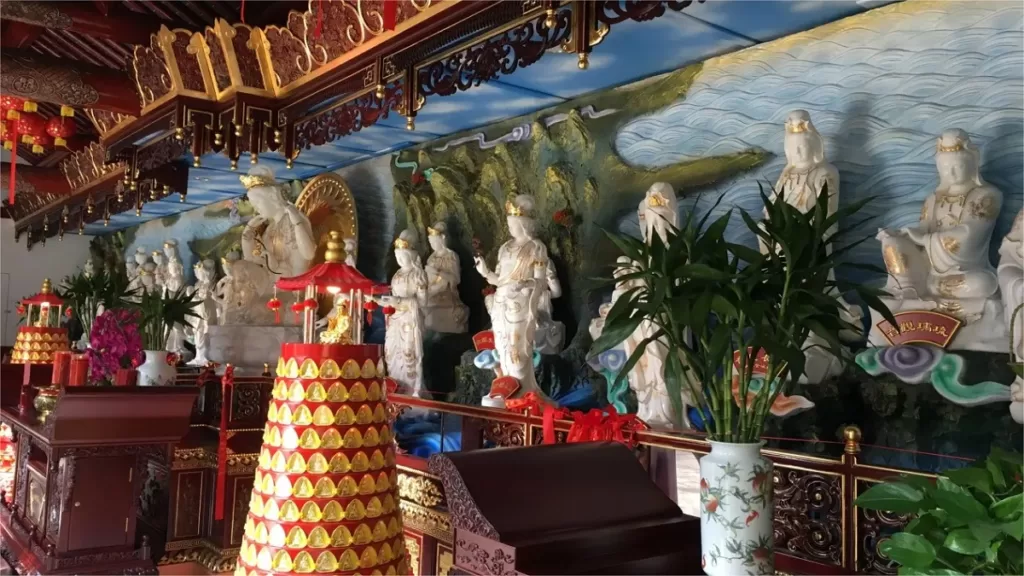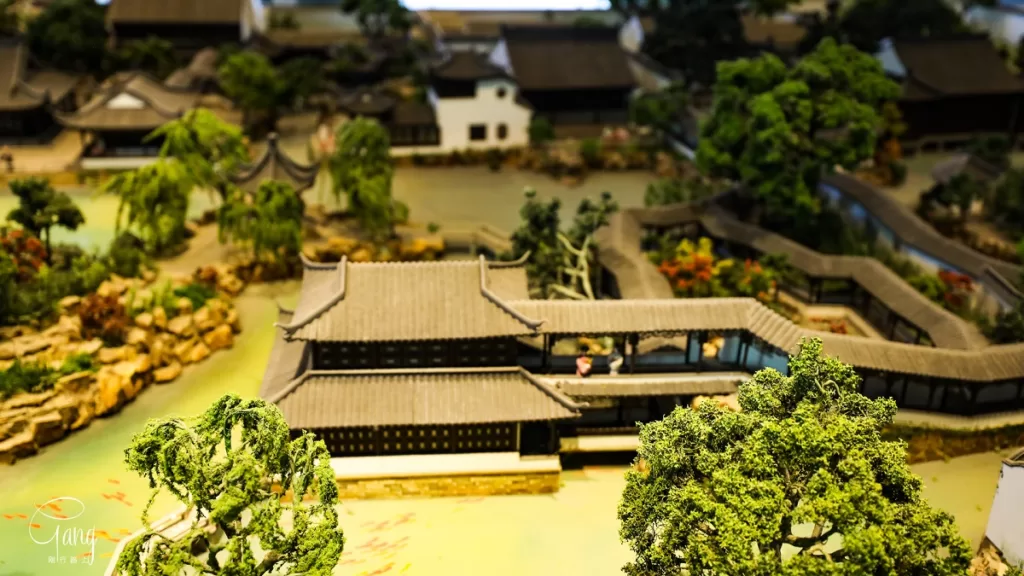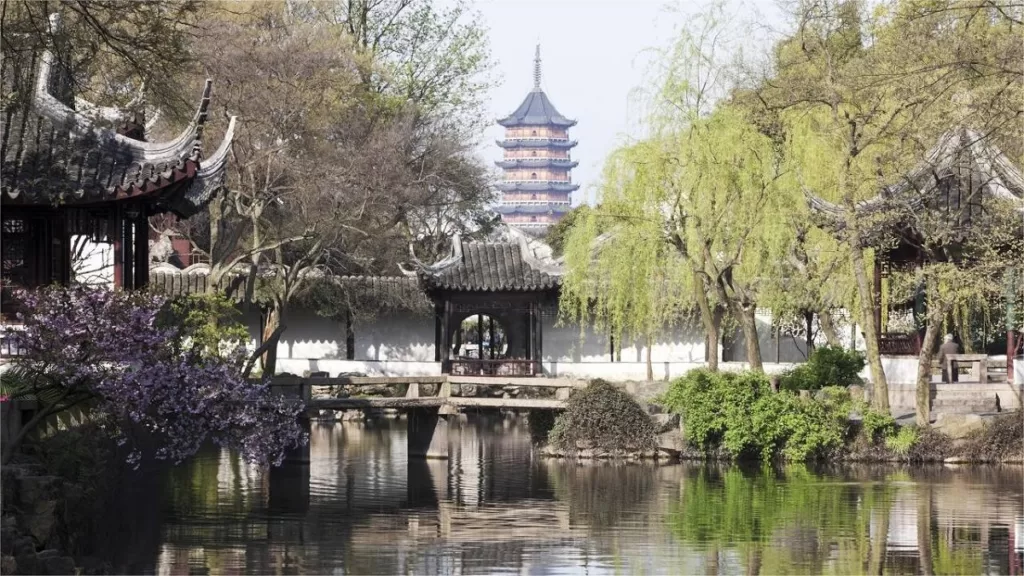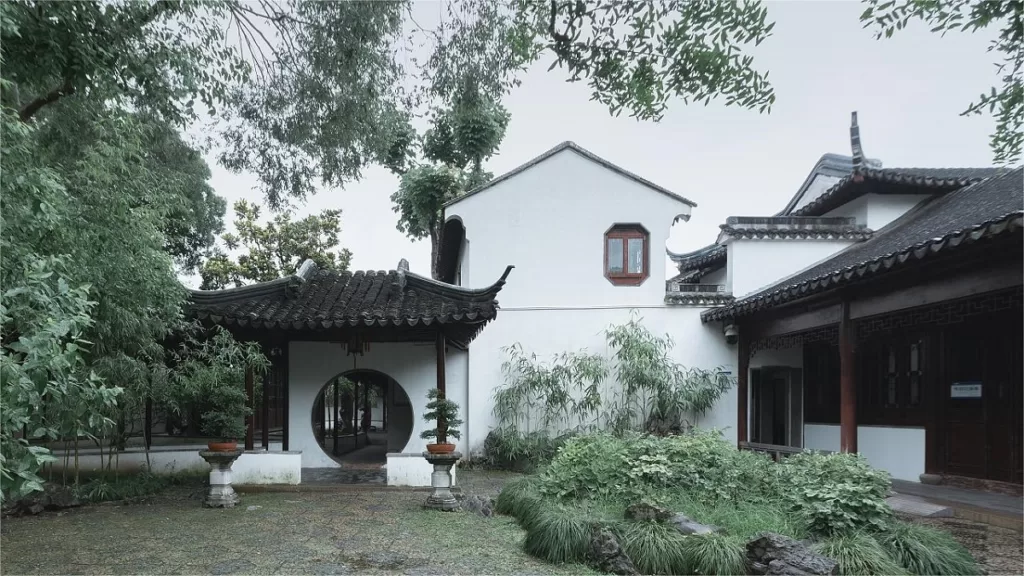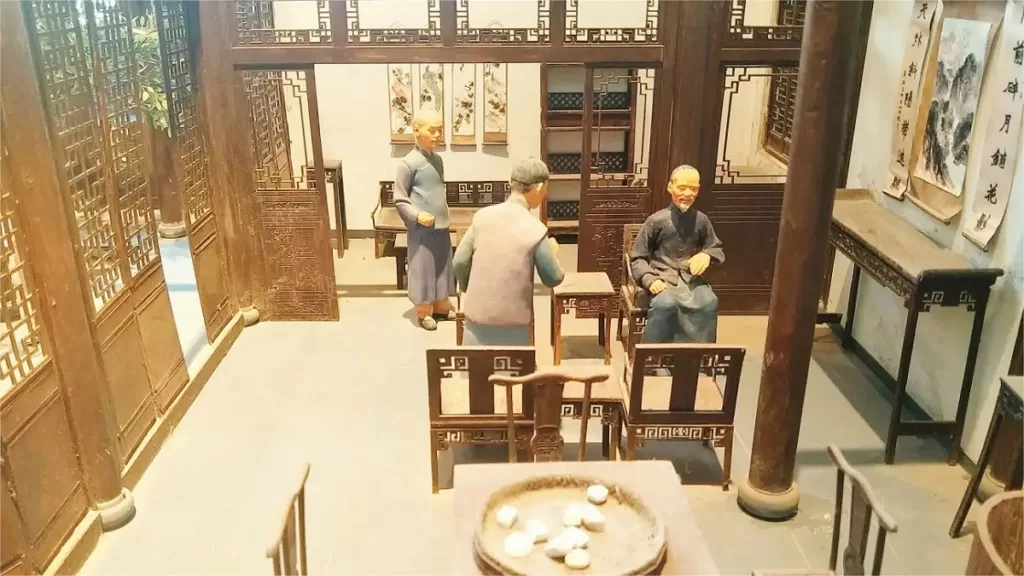Xuanmiao Temple (玄妙观), with its rich history spanning over 1700 years, stands as a testament to the cultural and architectural heritage of China. Established in the year 276 AD, this ancient temple has undergone various changes, reflecting the dynamic evolution of Chinese history and culture. Originally founded as Xuanmiao Temple, it was later renamed “Yuanmiao Temple” in the early Qing Dynasty to avoid referencing the reign name of Emperor Kangxi.
At its peak, Xuanmiao Temple boasted more than 30 halls, making it one of the largest Taoist temples in the country. Among its notable structures is the main hall, the Sanqing Hall, which was reconstructed in the sixth year of the Southern Song Dynasty’s Chunxi era (1179 AD). This grand hall, also known as the Hall of the Three Pure Ones, spans an impressive 9 bays in width, 6 bays in depth, and reaches a towering height of approximately 30 meters. Covering an expansive area of 1125 square meters, it remains the largest surviving wooden structure from the Song Dynasty in the Jiangnan region.
One of the remarkable features of Xuanmiao Temple is the extensive collection of ancient steles within its premises. These stone inscriptions bear witness to the historical and cultural significance of the temple. Among the treasures is a stone carving depicting Laozi, attributed to the Tang Dynasty artist Wu Daozi. This artwork, alongside inscriptions by Emperor Xuanzong of Tang and the calligraphy of Yan Zhenqing, collectively forms what is known as the “Four Masterpieces” stele – a rare and invaluable artifact, one of only two extant steles featuring an image of Laozi.
Table of Contents
- Basic Information
- Location and Transportation
- Highlights of Xuanmiao Temple
- Vlog about Xuanmiao Temple
- Useful Tips Summarized from Reviews
- Attractions near Xuanmiao Temple
- Other Temples in Suzhou
Basic Information
| Estimated Length of Tour | 1 hour |
| Ticket Price | 10 RMB |
| Opening Hours | 7.30 – 17.00; Last admission: 16.45 |
| History | First built in 276 and was the biggest Taoist temple in the Western Jin Dynasty Rebuilt in 1179 in the Song Dynasty and houses many stone steles |
| Telephone Number | 0086-0512-67276616 |
Location and Transportation
Positioned amidst the bustling streets and lively markets of Suzhou’s historic district, Xuanmiao Temple stands as a peaceful oasis, offering a momentary escape from the city’s energetic pace. Its exact address is No. 94, Guanqian Street, Gusu District, Suzhou, Jiangsu Province, China. To get there, you can choose the following ways:
Bus: Take bus 2, 8, 9, 32, 40 west route, 60 south route, 200 north route, 202, 501, 511, 529, 900 north route, 980 east route, or 9016, get off at the No. 1 Middle School Stop (Shi Yi Zhong, 市一中站), and walk about 500 meters to the north to reach the temple.
Metro: The nearest metro station to Xuanmiao Temple is ChayuanChang (察院场) on line 4. After getting out of the station from Exit 2, walk about 450 meters to the north to reach the temple. Other alternative stations include Leqiao (乐桥) on line 1 and line 4 and Lindun Road (临顿路) on line 1.
Highlights of Xuanmiao Temple
Sanqing Hall

The centerpiece of Xuanmiao Temple is undoubtedly the Sanqing Hall. With a platform measuring 49.6 meters in width and 29.5 meters in depth, this hall stands as the oldest wooden structure in Jiangsu province and the largest surviving Song Dynasty main hall in China. Raised approximately 1 meter above the surrounding ground level, the hall features a front terrace measuring 27.2 meters in width and 16.3 meters in depth, adorned with a central iron tripod. Enshrined within the hall are statues of the Three Pure Ones, seated on square pedestals and standing at a height of about 6 meters, with an elevation of 10.5 meters above the ground. The statues exhibit a dignified and lifelike presence, showcasing the highest quality of Daoist statuary from ancient times.
Traditional Market

Xuanmiao Temple has not only served as a spiritual sanctuary but has also played a role in the vibrant life of the surrounding community. Over the centuries, it has evolved into a renowned traditional market. Dating back to the Ming Dynasty’s Tianqi era, the temple grounds have hosted open-air storytelling sessions, eventually transforming into a bustling marketplace during the Qing Dynasty. The market, situated in the heart of the ancient city, features a diverse array of stalls offering snacks, daily essentials, stationery, toys, couplets and paintings, as well as booths for fortune-telling, astrology, and various street performances, creating a lively and colorful atmosphere.
Stone Steles
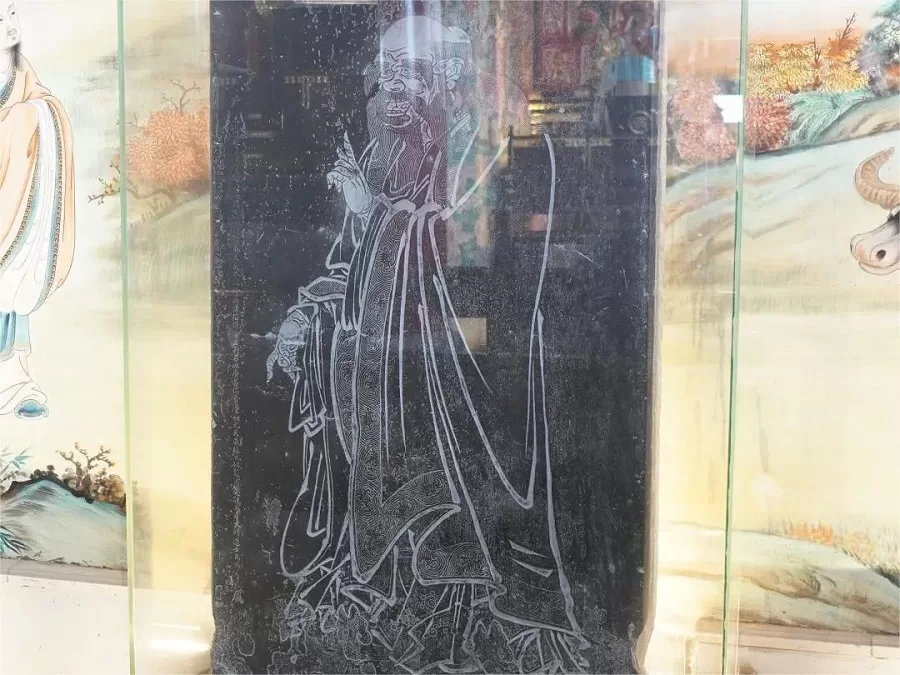
The temple is also home to a diverse collection of stone steles dating from the Song Dynasty to the late Qing Dynasty. In addition to the Laozi stone carving, notable steles include the “Record of Mr. Tongshen and His Straw Coat” from 1197 AD, the “Cleaning Taoist Stele” from the Ming Dynasty, and the “Record of the Restoration of the Sanqing Hall” from 1429 AD, each offering valuable insights into the historical and cultural context of the temple.
Vlog about Xuanmiao Temple
Useful Tips Summarized from Reviews
Appropriate Attire:
- As a sacred and pure place, it’s essential to dress modestly when entering Xuanmiao Temple.
- Avoid clothing that is revealing or overly ornate.
Respectful Entry:
- When entering the temple, avoid stepping on the threshold with your feet.
- Do not sit on the threshold. If entering from the left, step with the left foot first, and if entering from the right, step with the right foot first.
Quiet and Respectful Behavior Inside:
- Maintain a serene atmosphere within the temple; avoid loud noise or disruptive behavior.
- Refrain from pointing fingers at the deities, and do not touch or take photographs of the statues.
- During Taoist activities, stand quietly, observe in silence, or leave quietly to show respect.
Best Time to Visit:
- It is recommended to visit early in the morning when there are fewer people.
- This allows for a quieter and more peaceful experience, providing a better opportunity for contemplation and prayer.





